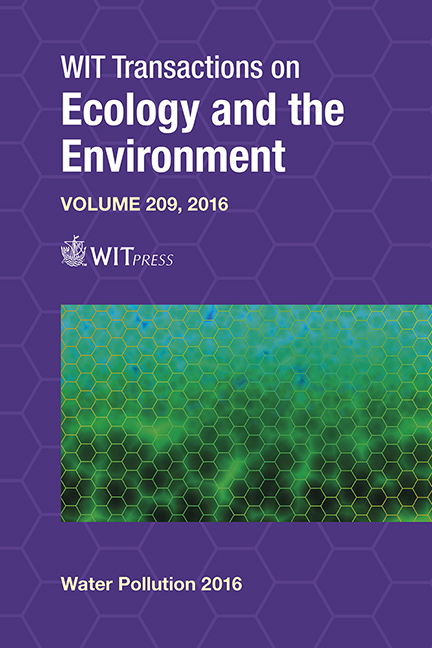UV Treatment Efficiency For E. Coli In Storm Water Containing Different Size Fractions Of Suspended Solids
Price
Free (open access)
Transaction
Volume
209
Pages
11
Page Range
221 - 231
Published
2016
Size
816 kb
Paper DOI
10.2495/WP160201
Copyright
WIT Press
Author(s)
S. McElmurry, N. Khalaf
Abstract
Ultraviolet (UV) treatment of water is known to be an effective means for reducing bacterial concentrations. While previous research has typically focused on UV treatment efficiency for disinfection of drinking water, the utility of this technology in treating more turbid samples is less clear. This study investigates the use of UV treatment for the disinfection of storm water from combined sewer overflow (CSO) events and specifically focuses on how suspended solids influence treatment efficiency for Escherichia coli. Storm water containing different size fractions of suspended solids was exposed to UV treatments and the rate of disinfection was determined. After approximately 3 orders of magnitude reductions in E. coli survival, significant tailing in the rate of disinfection was observed for unfiltered storm water and storm water containing particles less than 20μm. A particle associated bacteria (PAB) model which directly utilizes the concentration of suspended solids to estimate the effect of shielding is proposed and evaluated as well as a biphasic model, with two first-order rate constants. Experimental results confirm that suspended particles are important and need to be accounted for when determining UV treatment efficiency of CSO storm water. However, tailing observed may not be accurately described by current models and particle size suggests a mechanism other than shielding is responsible for tailing.
Keywords
ultraviolet treatment, storm water, E. coli, suspended solids





